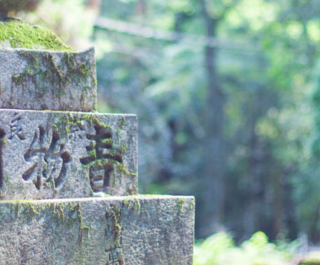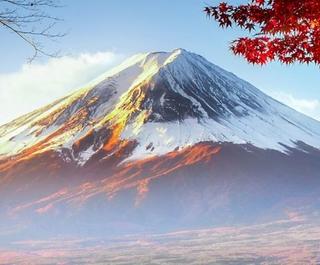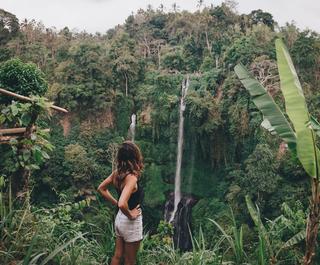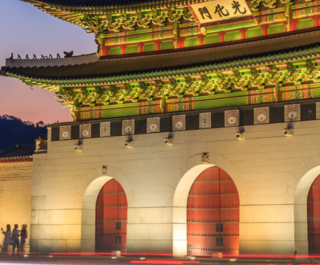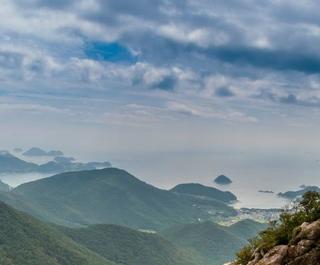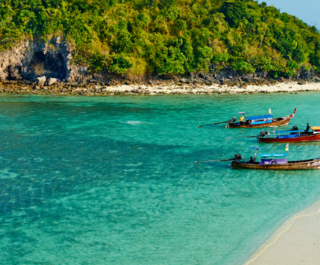
It's said you need at least two weeks in Thailand to truly experience the country and all it has to offer. With that in mind, we've got a two-week Thailand itinerary packed full of sightseeing experiences, accommodation options and adventures. Just know you might end up wishing you had booked another week.
Begin in Thailand's capital, Bangkok, the chaotic nature of which provides a good excuse to retreat to the jungle and countryside to experience the country's rural charms and to relax at the end with a few blissful beach days.
Once you've had your fill of the capital, hop on a train to Ayutthaya. For a more romantic journey, there's a two-day river cruise on a teakwood boat with Manorha Cruises.
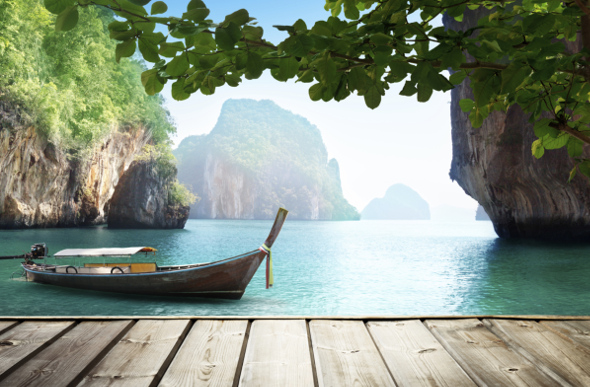 A traditional Thai boat docked in the Andean Sea (image: Getty)
A traditional Thai boat docked in the Andean Sea (image: Getty)
Old Towns & Temples
Ayutthaya
A stop at Ayutthaya – the elegant former capital of the old Thai kingdom – on your trip north is compulsory. A short walk from the station, the ruins of crumbling red brick temples scattered across sprawling lawns around town easily evoke the grandeur of a glittering 15th-Century heyday. Spend the day strolling the sights before settling into a sleeper on an overnight train to Chiang Mai.
Chiang Mai
Charming, arty Chiang Mai is one of Thailand's most popular destinations and its second biggest city. Stuck in gridlocked traffic inhaling fumes it feels like it, too, but stroll tranquil temple grounds in the old city, such as Wat Phra Singh, Wat Chedi Luang or Wat Chiang Man, and then linger in the leafy grounds of the Green O'Clock cafe and you'll think you're in a big country town.
Local artist Mit Jai Inn's boutique hotel Mo Rooms, with wild rooms themed by Chinese zodiac signs epitomises the stylish new Chiang Mai. The city is peppered with contemporary galleries, vintage boutiques, farm-to-table restaurants (try pioneer Pun Pun restaurant) and Cafe Mini (Soi 9, in increasingly hip Nimmahaemin), which serves small plates.
Old-fashioned attractions still appeal: the night market, crafts shops, cooking classes, street food stalls, and affordable massages and spas, along with an abundance of activities around Chiang Mai. While you can easily spend a few days sightseeing and chilling out in town, in 20 minutes you're in the stunning countryside, dominated by Doi Suthep mountain, Mae Sa valley, and countless elephant camps.
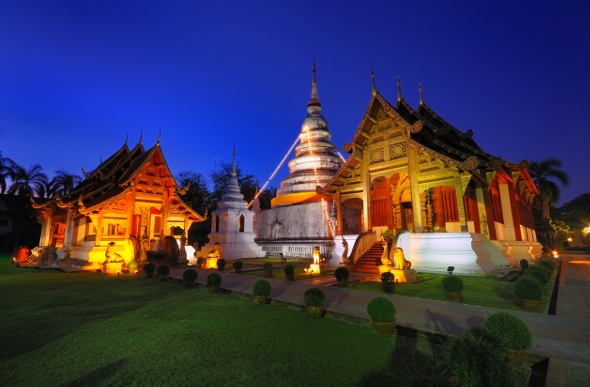 Wat Phra Singh is a great place to visit to discover Thailand's culture and history (image: Getty)
Wat Phra Singh is a great place to visit to discover Thailand's culture and history (image: Getty)
Lampang
Lampang, which is home to gleaming pagodas and antique timber houses to rival Chiang Mai's, is worth a detour. Burmese temple Wat Sri Rong Muang has embellished pillars and multi-tiered roofs, while atmospheric Ban Sao Nak (or House of Many Pillars), dating to 1895, has 116 pillars and antique-filled rooms. Ironically, for one of the area's least touristy towns, the most popular activity is an old town horse-drawn carriage, because it was once the town's only form of transport.
Tribe trekking
When you eventually drag yourself away from Chiang Mai it will probably be for a hill tribe trek, still one of northern Thailand's must-do activities.
It's estimated that some 800,000 people from ethnic minorities live in around 3,500 mountain villages, so while the scenery you'll savour as you hike over hills is spectacular, it's the encounters with people along the way that is really special. Thousands of tour companies offer treks so it's essential to determine what kind you want to do: from an easy overnighter to a more challenging three days … and do your research.
Staying longer in Bangkok? Game Over: A Cafe-Bar & Gaming Centre In Bangkok
Checking into Phuket? 10 Best Phuket Beaches
Countryside & Khmer Ruins
North-eastern Isaan is Thailand's largest, poorest and least developed region. It's also the country's most dramatic, delicious, bucolic, and quirkiest destination.
This is cowboy country, Thailand's rural heartland, beloved by locals for its folk music called Mor lam, fiery cuisine, and farm stays. It's also home to splendid Khmer Empire temples – like Cambodia's, but without the tourists.
From Udon Thani: a circular tour
While distances are long, it's possible to get a taste of the region in a few days. From Chiang Mai fly to Udon Thani airport, where you can collect a rental car or hire a car with a driver. Buses run less frequently but are better for longer trips. Alternatively, do an organised tour by car, motorbike or bicycle.
From Udon Thani, do a loop west over rolling green hills toward Loei and its colourful flower market-gardens, south-west to Dan Sai, for its ramshackle wooden houses and mask-makers (the masks are worn during the town's rainmaking festival Phi Ta Kon in March-July), before driving south via Lom Sak and east along quiet roads covered by tree canopies to Khon Kaen.
Friendly university city Khon Kaen is Isaan's foodie capital, famous for spicy som tam salad and fiery curries, best sampled at its lakeside night market. Stay at family-owned Supanniga Home, set in sprawling gardens just out of town, or in the centre at modern Piman Garden Hotel, close to the markets and lake Beung Kaen Nakhon, where locals exercise and eat.
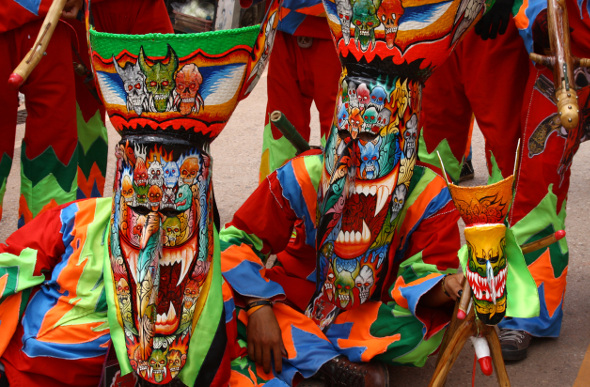 Fearsome masks at the Phi Ta Kon rainmaking festival (image: Getty)
Fearsome masks at the Phi Ta Kon rainmaking festival (image: Getty)
Venture south, and back to Bangkok
Head south via the silk weaving village of Chonnabot, where you can watch weavers work in their homes when they're not working their farms, to the walled town of Phimai for its elegant 11th-Century Khmer empire temple complex Prasat Hin Phimai. Push on to Surin and stay overnight at welcoming homestay, Pirim-Aree's House.
Rise before dawn for the 90-minute drive south-east, through emerald paddocks where cowboys herd cattle and lush rice paddies are dotted with water buffalo, to the majestic 11th-Century Khmer Empire mountain temple, Prasat Phanom Rung, home to the god Shiva and, nearby, enchanting Prasat Muang Tam, surrounded by a moat filled with lotus flowers.
Backtrack to Surin and on to Nakhon Ratchasima (aka Khorat), a busy little Thai city with fantastic street food that rarely sees tourists. If there's time, before returning your car, check out kooky Farm Chokchai, a favourite with Bangkok tourists for learning to ride tractors, milk cows, make ice-cream, and watch cowboys performing horseback stunts.
To avoid driving into Bangkok, take a bus to its Northern Bus Terminal, near Mo Chit BTS , so you can make a beeline for the beach.
Islands & Beaches
By now you deserve some time on the beach. Most travellers stay on southern Thailand's most popular destinations – Phuket, Krabi and Koh Samui. They're easy to reach, included in most packages, boast fine beaches, and Phuket's old town has its charms; but on the downside, they get uncomfortably crowded and are very developed, hideously so in parts. Instead, spend a couple of days each at two low-key alternatives.
Ko Yao Noi – equidistant from Phuket and Krabi, and easy to reach from both by boat – lies on the edge of striking Phang Nga Bay and is one of Thailand's most laid-back islands. The beaches may not be breathtaking and swimming is best at high tide but the lack of development, unpretentious accommodation, easygoing locals, pristine forests, birdlife, wildlife, and fishing make it infinitely more appealing than its neighbours. Did I mention the spectacular sunsets?
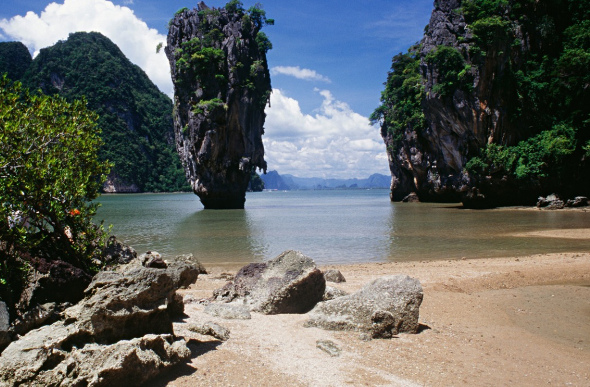 A calm beach in Phang Nga Bay
A calm beach in Phang Nga Bay
In the Andaman Sea, near Burma's southern coast, are two blissful islands, surprisingly accessible from Bangkok with Nok Air to Ranong and then transfers by boat.
Koh Phayam is the sort of island where not long after checking into your beach bungalow and settling into your hammock to listen to the waves lap against the shore, you find yourself drafting a job resignation letter in your head. There are a dozen rustic places to stay, no ATMs, one supermarket and a few roads. When you tire of doing nothing, there's diving, snorkelling, kayaking, fishing, jungle treks and birdwatching.
If that sounds like too much activity, then try Ko Chang Noi. A favourite of artists and musicians, this is an island for beach bums who want to get back to nature. Don't expect room service, air conditioning, hot water, or even electricity for the entire day. Best pack a guitar or paintbrushes.
.........................................................................................................................................................
Visit your local Flight Centre store or call 131 600 for more advice and the latest deals on travelling to Thailand.
.........................................................................................................................................................
This article originally appeared on guardian.co.uk
This article was written by Lara Dunston from The Guardian and was legally licensed through the NewsCred publisher network.![]()


